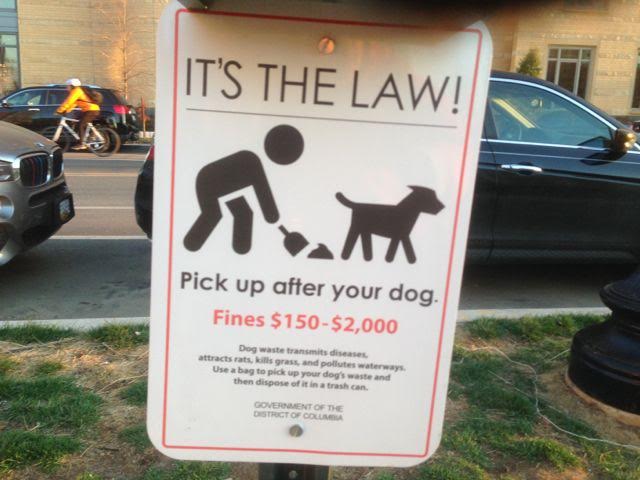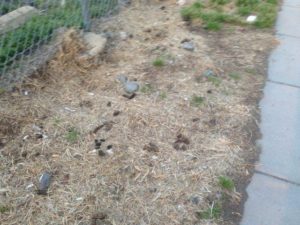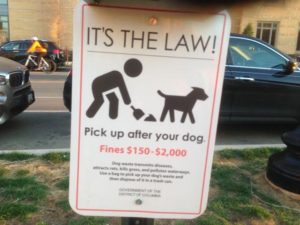

Does this picture bother or offend you? I hope so, because this situation greatly disturbs me as a resident and as a pet owner. This particular stretch of I St. SE between Half St. and New Jersey is about as fragrant as 4th Ave. in Anchorage, Alaska at the ceremonial start of the Iditarod dog sled race. Unlike 4th Ave., however, no one is tasked with picking up this dog waste before it becomes an environmental hazard. The owners of the dogs whose waste is found on I St.—and elsewhere in SW and Navy Yard—apparently believe a “poop fairy” waves a wand and magically disposes of all this waste. One would think days and weeks of festering, smelly dog waste would encourage a different approach. One would be wrong.
Perhaps these lazy dog owners think that because no one picks up after wild animals, a bit more waste from our four-legged companions is inconsequential. According to the Environmental Protection Agency, however, waste from domestic pets is one of the largest single non-point sources of fecal coliform pollution in urban areas—not just in cities like Anchorage that have an unusually high population of dogs per capita—but every city. Industrialization has allowed a far greater concentration of mammals in our neighborhood than probably existed in all of what is now the District before the arrival of Europeans. Higher concentration of populations means more waste, and it thus becomes increasingly important to manage and dispose of that waste safely. Before the development of sewers and public sanitation, cholera epidemics were a regular feature of life in urban areas. As civilized people, we are both concerned and offended when human waste is found outside of appropriate facilities, yet too many of us think dog poop is exempt from sanitation regulations. Fortunately, the government of the District knows better and requires dog owners to clean up after their pets and to dispose of the waste in an environmentally safe manner. Just because there are no “poop police” (as there is no “poop fairy”) does not exempt any of us from following those rules, for our own health, and the for health of our neighbors.

One of the advantages of this area is its proximity to the rivers and the recreation opportunities they provide. On any sunny weekend one sees dozens and dozens of boats, kayaks, rowing shells, and stand-up paddle boards out on the water. Even if you don’t personally participate in water sports, you are a neighbor of someone who does. Or perhaps you, or a neighbor, are employed by a business for which proximity to the river is an important piece of its success. Or maybe you enjoy fishing somewhere close by. The current administration has proposed severe budget cuts to programs intended to improve water quality in the Chesapeake Bay watershed, of which we are a part. It is much harder to argue for restoration of those funds if we are unwilling to perform even the simplest of tasks—picking up and properly disposing of pet waste—that help improve water quality in the Anacostia and Potomac rivers. Come on DC—pick it up!
By: Catherine Ranger

